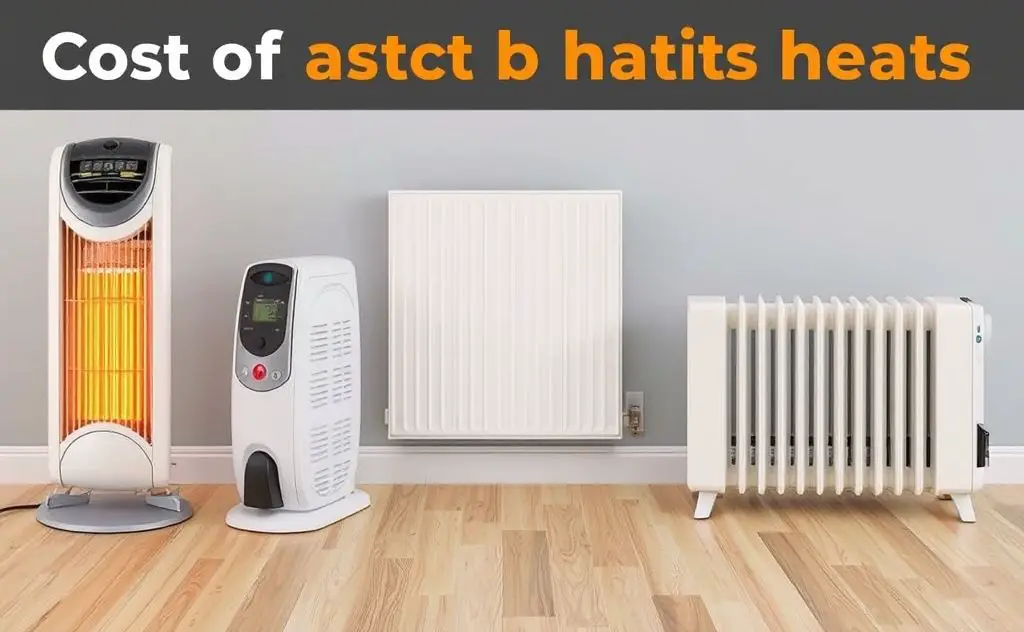The costs of electric heaters vary widely, with portable models ranging from $20 to $200, while whole-home systems can exceed $1,000, plus installation fees.
Electric heaters offer versatile heating solutions for homes, offices, and outdoor spaces. Costs vary widely based on type, efficiency, and installation requirements. This guide breaks down pricing for all major electric heater categories.

Portable Electric Heaters
Portable units provide flexible spot heating with minimal installation. Prices range from budget to premium models.
Basic Fan Heaters
- Cost: $20-$50
- Wattage: 750-1500W
- Best for: Small rooms, temporary use
Ceramic Space Heaters
- Cost: $40-$150
- Wattage: 1500W
- Features: Oscillation, thermostats
Oil-Filled Radiators
- Cost: $60-$200
- Wattage: 700-1500W
- Advantage: Silent operation
For premium portable options, consider electric heaters that look like wood stoves which combine aesthetics with functionality.

Fixed Electric Heaters
Permanent installations provide whole-room or whole-home heating with higher efficiency.
Baseboard Heaters
| Type | Cost | Coverage |
|---|---|---|
| Single unit | $50-$150 | 100-150 sq ft |
| Whole-home system | $1,000-$3,000 | 1,500-2,000 sq ft |
Wall Heaters
- Basic models: $100-$300
- Smart/wifi models: $250-$500
- Installation: $150-$300 per unit
For replacement parts on wall units, see our guide to wall heater knob replacements.
Specialty Electric Heaters
These units serve specific heating needs with unique features.
Infrared Patio Heaters
- Cost: $200-$800
- Wattage: 1500W-3000W
- Coverage: 100-300 sq ft outdoors
Tankless Water Heaters
| Type | Cost | Flow Rate |
|---|---|---|
| Point-of-use | $200-$500 | 1-2 GPM |
| Whole-home | $800-$1,500 | 5-8 GPM |
According to Energy.gov, heat pumps can reduce electricity use for heating by up to 75% compared to traditional electric resistance heating.
Operating Costs Comparison
Long-term expenses vary significantly by heater type and local electricity rates.
Cost per Hour at $0.15/kWh
- 1500W space heater: $0.23
- 5000W baseboard: $0.75
- 3000W patio heater: $0.45
Monthly Costs (8hrs/day)
- Portable ceramic: $55
- Whole-home baseboard: $180
- Infrared patio: $108
As noted by Oklahoma State University, comparing energy costs requires converting all sources to common units like MMBtu for accurate analysis.
Installation Factors
Professional installation adds to total costs for permanent units.
Typical Installation Fees
- Baseboard heaters: $75-$150 per unit
- Wall heaters: $150-$300 per unit
- Tankless water heaters: $500-$1,000
Electrical Upgrades
- New circuit: $150-$300
- Panel upgrade: $1,000-$3,000
- 240V outlet: $200-$500

